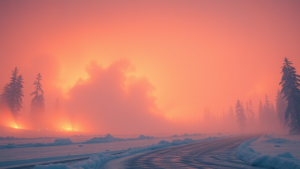The polar vortex is an atmospheric phenomenon that significantly impacts winter weather patterns in the Northern Hemisphere. As we look ahead to the polar vortex in 2025, understanding its implications is crucial for those anticipating extreme weather conditions. The polar vortex consists of cold air that typically circulates around the Arctic region. However, disruptions can occur, leading to severe winter weather across the Midwest and Northeast of the United States.
In 2025, scientists expect the polar vortex to potentially shift and create unseasonably cold temperatures and record snowfall in areas that typically experience milder winters. The connection between the polar vortex and climate change raises questions about the stability of this pattern. It is predicted that warming Arctic temperatures may result in more frequent and stronger disruptions of the polar vortex, leading to erratic weather conditions.
- Cold Outbreaks: Regions affected by the polar vortex may face extreme cold snaps, causing hazardous travel conditions and impacting daily life.
- Increased Snowfall: Areas could experience heavier than normal snowfall, particularly in the Great Lakes and Northeast, prompting winter storm warnings and advisories.
- Impact on Agriculture: Farmers may need to adapt their practices, as late-season cold can threaten crops and livestock.
As meteorologists examine long-term forecasting models, they stress the importance of tracking the polar vortex closely in 2025. Understanding its behavior can aid communities in preparing for potential disruptions. The polar vortex serves as a reminder of the intricate connections within our climate system and the significant effects it can have across vast regions.




